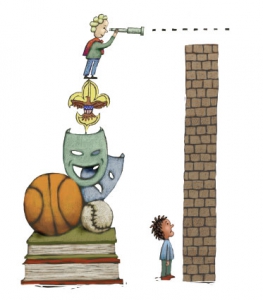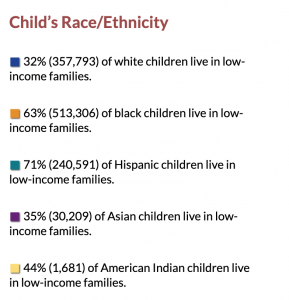After-School Programs in Urban Environments
The effects of a lack of after-school programs in urban schools and environments for young students is a major issue. Access to these extracurriculars should be a universal thing, and the consequences as a result of their absence affects certain cities and groups of people more than others.

Extracurricular Inequity. Source: http://vue.annenberginstitute.org/issues/40/inequity-outside-classroom-growing-class-differences-participation-extracurricular
While it is plain to see the advantages of being a student being involved in extracurriculars, especially from a resume standpoint, but not being involved in extracurriculars does more than free up time for kids to get into trouble. Dubbed the “Activity Gap,” lack of involvement actually has been proven to deprive children of support and development, disadvantaging them for the foreseeable future.
What is happening in Atlanta?
Atlanta has one of the lowest high school graduation rates in the country (44%) and African-American youth make up over 93% of total intake for unique youth served for criminal offenses. There are also over 50 youth gangs in the metro area, which some believe to be the result of loitering youth and repeating crimes (Donovan, 2009, para. 4). These statistics demonstrate that the educational system in Atlanta is failing urban youth, particularly students of color, both in shaping them academically and socially. Expanding access to after-school activities is a much needed solution; it’s not just about keeping students busy and out of the streets.
Why is this happening?

Georgia Demographics of Low-Income Children. Source: http://www.nccp.org/profiles/GA_profile_6.html
Despite Georgia not enforcing pay-to-play (Georgia schools can’t restrict sports participation if fees are not paid) like other states, Atlanta families are still spending upwards of $1,000 per sport per season, not to mention the anti-pay-to-play only covers sports (Holcomb, 2013, para. 3). Extracurricular enrichment includes any after-school program, club, or community organization, and they are not always free to join. This results in students who are perhaps limited in familial income (48% of children in Atlanta live in low-income families, compared to the national average of 41%, and 56% of those children live with a single parent) (Georgia Demographics, 2018, para. 9). Additionally striking are the racial demographics of low income family children in Georgia, with the percentages of every other race being greater than low income white children.
It is clear to see that access to extracurricular activities affects poor children of color most, and as a result, these kids would benefit the most from greater access to extracurricular activities.
